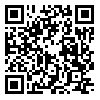Volume 22, Issue 2 (2015)
EIJH 2015, 22(2): 35-51 |
Back to browse issues page
Download citation:
BibTeX | RIS | EndNote | Medlars | ProCite | Reference Manager | RefWorks
Send citation to:



BibTeX | RIS | EndNote | Medlars | ProCite | Reference Manager | RefWorks
Send citation to:
Hessari M, Yousefi Zoshk R, Niknami K. Study of Sasanian Architectural Elements in the Mausoleum of Amir Ismail Samanid and their Connection with the Revival of Iranian Identity during 3rd – 5th Centuries A.H. EIJH 2015; 22 (2) :35-51
URL: http://eijh.modares.ac.ir/article-27-2582-en.html
URL: http://eijh.modares.ac.ir/article-27-2582-en.html
1- Assistant Professor, Department of Archaeology, Art University of Isfahan,
2- Assistant Professor, Department of Archaeology, Islamic Azad University of Varamin Rector, Varamin-Pishva Branch
3- Department of Archaeology, University of Tehran
2- Assistant Professor, Department of Archaeology, Islamic Azad University of Varamin Rector, Varamin-Pishva Branch
3- Department of Archaeology, University of Tehran
Abstract: (5105 Views)
The appearance of animal images on the archaeological remains is always considered as an evidence to determine their natural living and their role in human's cultural and ritual life. Animal imagery is found in every medium of art in the Proto Elamite period include stone statuette, pottery, metalwork and finally seal impressions. The glyptic art and pottery through their diversity and the nature of their symbols provide the researchers with the basic information with which to piece together the iconography and the social and economy history of the Proto Elamite period. This paper examines serpent, turtle and feline imageries and related pastiches on two media at Tepe Sofalin, including seal impressions and pottery fragments.
Received: 2011/11/11 | Accepted: 2012/12/31 | Published: 2015/03/21
| Rights and permissions | |
 |
This work is licensed under a Creative Commons Attribution-NonCommercial 4.0 International License. |







